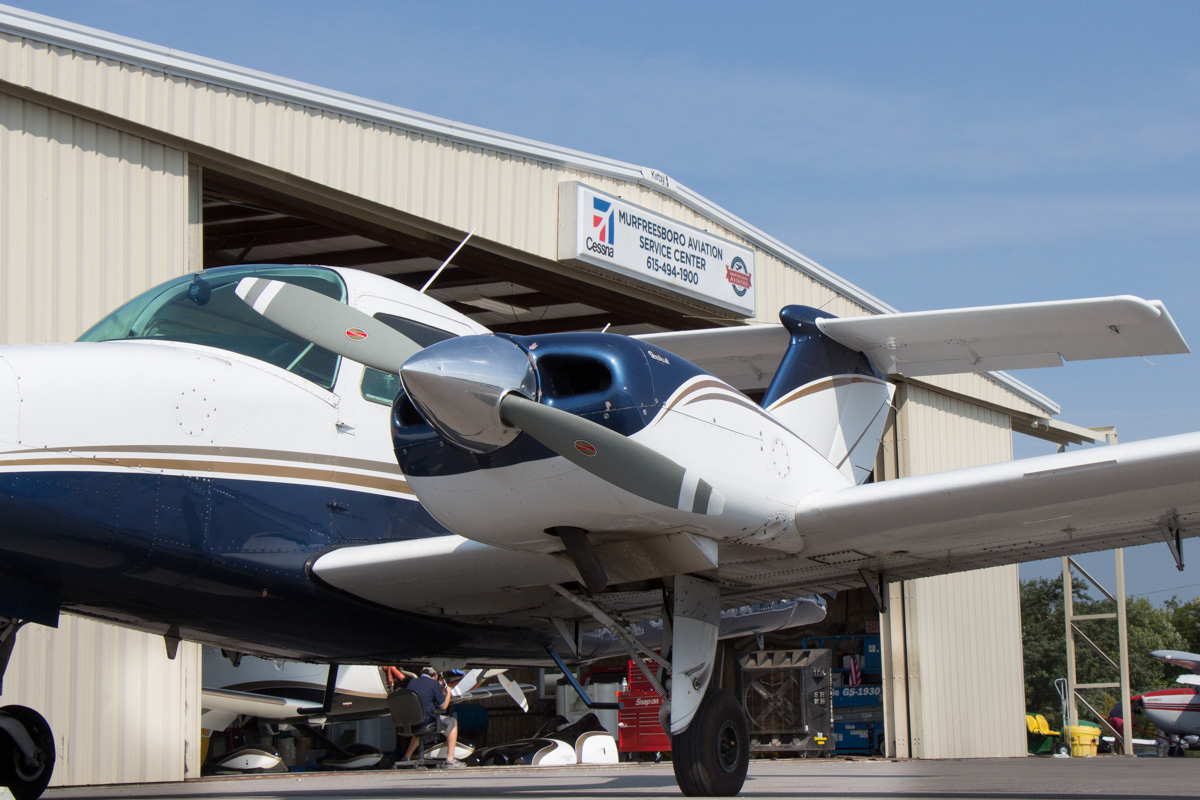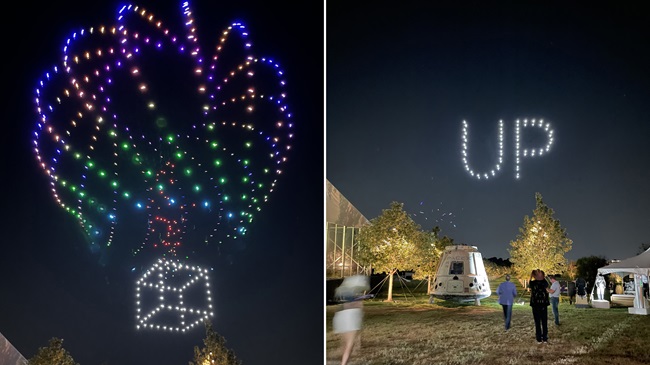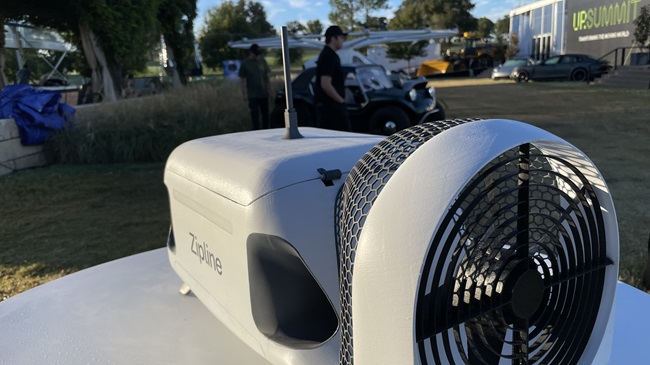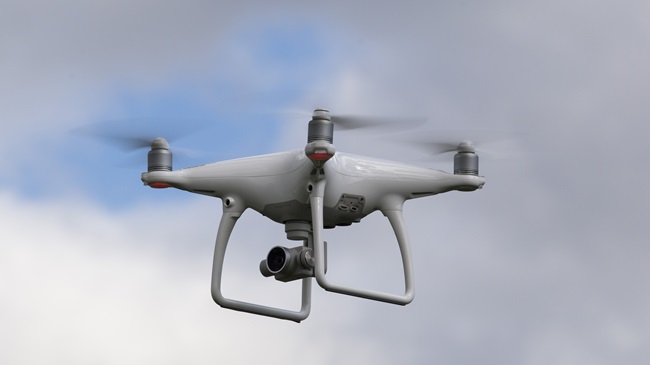Drone classes fill fast
Tennessee flight school tests Part 107 waters

Time will tell how potent drones are as tools for general aviation recruiting. Senior instructor Marty Newcomb said in a Sept. 7 telephone interview that three of the first dozen students to take the class expressed interest in flight training; two of them are rusty pilots, and another is a nonpilot who expressed interest in a discovery flight.
The FAA does not require the knowledge test for pilots who already hold a certificate (other than student pilot) under the new small unmanned aircraft rule (Part 107) that took effect Aug. 29 and governs nonhobby use of unmanned aircraft that weigh less than 55 pounds. (AOPA has prepared an online guide to remote pilot certification.)
While completion of an online FAA safety course, along with a current flight review, are sufficient for certificated pilots to qualify for the new remote pilot certificate, Newcomb and Murfreesboro Aviation Owner Jim Gardner agreed in the weeks leading up to the Aug. 29 effective date of Part 107 that there would probably be demand for an in-person ground school that covers the required knowledge, and prepares both pilots and nonpilots to take the written test that is mandatory for nonpilots. Newcomb crafted a curriculum based on information available from various sources, though some guesswork was involved since no one outside of the FAA had seen the test when he started the work.
The school announced the class by email, and Gardner said the response was quite a surprise.
“Within two to three hours via phone calls, the class was sold out,” Gardner said. Each seat was priced at $395 for the all-day class, which includes the $150 test fee. The phone started ringing as soon as the emails hit inboxes, and the class sold out before General Manager Blake Tumbleson could get the blog post on the company website.
A second class slated for Sept. 24 is also filled to capacity (10 students, 12 at most), and an October class (date to be determined) is half full, Tumbleson reported in an email Sept. 20, noting that attendees have posted a 100-percent pass rate to date.
“After Christmas, we're expecting hundreds of new drone owners in Middle Tennessee and will be prepared to hold as many classes as necessary to accommodate the demand,” Tumbleson wrote.
Jonathan Rupprecht, a pilot and attorney who specializes in drone matters, recently published statistics from the first two weeks of Part 107 testing, data that show an 87.88-percent pass rate for the 5,124 tests taken in the first 15 days. Rupprecht said he obtained the data from an undisclosed FAA staffer, and noted in an email that the pass rate for the remote pilot test was slightly lower than the 89.44 percent pass rate for private pilot knowledge tests; furthermore, he also noted that the FAA received 12,024 remote pilot certificate applications in the first two weeks, meaning that the majority of the applicants (7,500 or more) already held a pilot certificate.
Rupprecht wrote Sept. 20 that flight schools around the country could earn a few dollars they have not seen before thanks to Part 107.
“Flight schools are going to get recurrent test takers every 24 months,” Rupprecht wrote in an email exchange. The test is effectively a flight review for drone pilots: It must be taken every two years unless the remote pilot certificate holder maintains a current flight review for his or her other pilot certificate. “I think there is some extra cash schools can generate, but only some. It kinda reminds me of my local school where they have a G1000 training every 2 months.”
The FAA does not require drone pilots to demonstrate aircraft maneuvering skills, nor any of the other skills commercial operators must hone to capture and edit high-quality video and photos, or the use of mapping tools and software, or myriad other tasks being handled by drones.
Still, the Tennessee flight school operators see an opportunity.
“Jim and I have thought about getting someone to teach the practical side,” Newcomb said. “Maybe expand that program.”
Rupprecht expects more limited demand for hands-on training in the long term.
“I see the practical training coming in with industry specific training. Organizations are already working on standards and will have their own drone certification,” Rupprecht wrote. “I think there is some demand for training, but I don't think it is that great. The ones seeking training are those that are trying to prevent the (commodification) of their services. As everyone becomes a remote pilot, only those with good business skills, editing skills, and good flying skills to get great shots will be able to command higher prices.”
Patrick Egan, the organizer of the Small Unmanned Systems Business Expo who teaches film and television production using drones at Academy of Art University in San Francisco, said scores of ground school operators purport to prepare people for Part 107 operations, some charging as much as $2,500 for information that is available free from the FAA.
“A lot of these guys that are drone people, which has always been the problem, is that they’re software people, not aviation people,” Egan said in a telephone interview.
In his own classes, he not only teaches airspace knowledge but helps students develop their hand-flying skills.
“A lot of these drones have a lot of automation,” Egan said. He asks students to consider “what are you going to do if the technology’s not working?”
He challenges students to “think about how you can get your shot and be safe,” and notes that Hollywood demands both the aeronautical and film production knowledge.
“There’s a real culture of safety on movie sets,” Egan said. “If you’re dangerous, you’re not working again.”
Newcomb said safety has been the primary motivation for both the creation of the class, and for many of those who have signed up. He hopes a safety culture will take hold among hobbyists.
“We had a scenario the other day … a drone got too close for comfort at 3,000 feet,” Newcomb said. Some of the flight school’s first Part 107 students have no plans to fly drones for hire, but want to have the airspace and safety knowledge nonetheless, and are willing to spend a Saturday (and the class fee) to obtain it.



